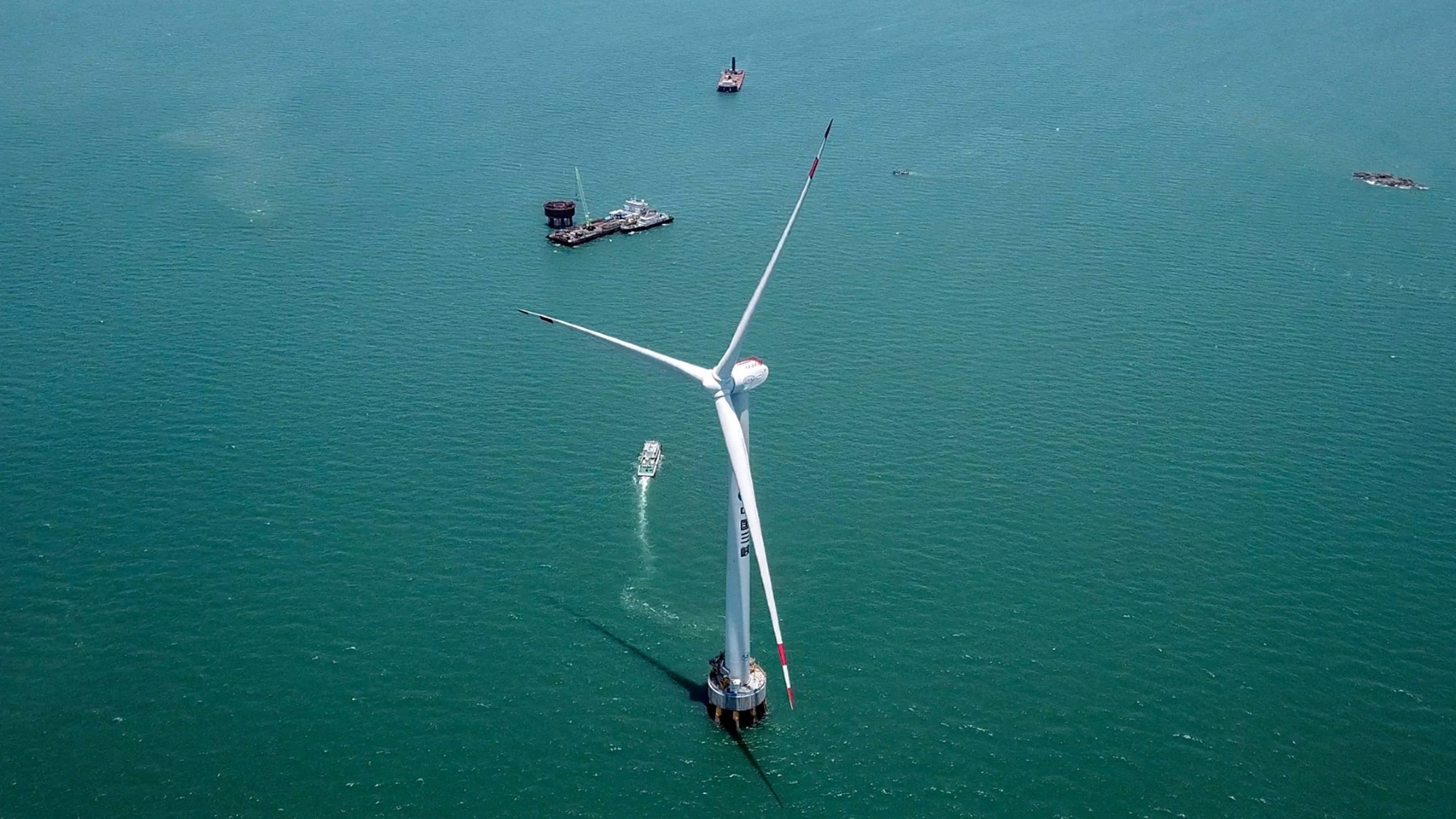China, a world leader in renewable energy, is facing an unexpected challenge in its energy transition. A recent failure in a prototype of high power wind turbine manufactured by Mingyang revealed the technical and logistical difficulties in expanding these technologies.
Beyond the incident, however, a bigger problem arises: managing the growing amount of technological waste generated by the renewable energy industry.
Failure in an important prototype
Mingyang confirmed his offshore turbine prototype MySE18X-20MW suffered a fracture in the blades during extreme tests in Hainan.

Although the company assured that the incident occurred during a testing phase and did not cause any personal injury, images of the damage reignited the debate over the reliability of large-scale turbines.
The challenge for China lies not only in perfecting the technology, but also in managing the waste these facilities generate at the end of their lives. Solar panels and wind turbines, which are still active in the environmental field, become bulky waste that is difficult to recycle once disposed of. And China, as a leader in sustainable energy, is on its way to confronting an avalanche of technological waste.

Recycling Guidelines
The National Development and Reform Commission (NDRC) and other government agencies have issued guidelines to accelerate the recycling of wind and photovoltaic equipment. Authorities are trying to anticipate the large-scale dismantling of facilities planned for the coming decades, with the aim of having a mature recycling system by the end of this decade.
Strategies include developing industry standards for the decommissioning, decommissioning and recycling of renewable facilities. Manufacturers are required to design equipment that can be easily dismantled and recycled, and energy companies must take responsibility for disposing of equipment at end of life.
In addition, waste should not be buried in landfills, which means manufacturers must offer recycling services collaborate with specialized companies.
Projections that cause concern
Experts predict that China will need to recycle waste by 2030 1.5 million tons of technological waste, a load that could reach 20 million tons by 2050. Greenpeace estimates that by 2040 the country will decommission installations equivalent to 250 GW of solar energy and 280 GW of wind energy.
The challenge of recycling renewable technologies is global. According to the International Renewable Energy Agency (IRENA), waste from photovoltaic installations could increase from 0.2 million tons in 2021 to more than 200 million tons in 2050.
Europe is also facing a growing burden of wind turbine waste, with countries such as Germany, Spain and Denmark leading the way in decommissioning these facilities.
WindEurope estimates that by 2025 approximately 25,000 tons of wind blades They will reach the end of their lifespan every year, and by 2030 the number will double. Germany, Spain, Italy and France will be the European countries most affected by this problem.
Renewable ambition and responsibility
The challenge for China lies in the scale of its sustainable commitment. The country aims to achieve net zero carbon emissions by 2060 and reduce its dependence on coal. China did not plan to install until 2023 160 GW of solar and wind energyand aims to have 1,200 GW of renewable capacity by 2030, a target that could be achieved even earlier than expected.
However, this enormous commitment comes with great responsibility. Renewable facilities have an average lifespan of 20 to 25 years, meaning China will soon experience a wave of decommissioning and waste generation.
Innovative solutions
To prevent technological waste from becoming an environmental problem, the industry is looking for innovative solutions to recycle the blades and turbines removed.
Some strategies include extracting rare metals from generators, reusing blades to build bridges or street furniture, and recovering chemical compounds for new industrial applications.
Recycling wind turbines is a complex task, but essential to ensure that the energy transition does not bring new environmental problems. Yeah okay China has been a pioneer As renewable energy sources expand, the true success of the model will depend on its ability to sustainably manage the waste that this energy revolution will generate.

